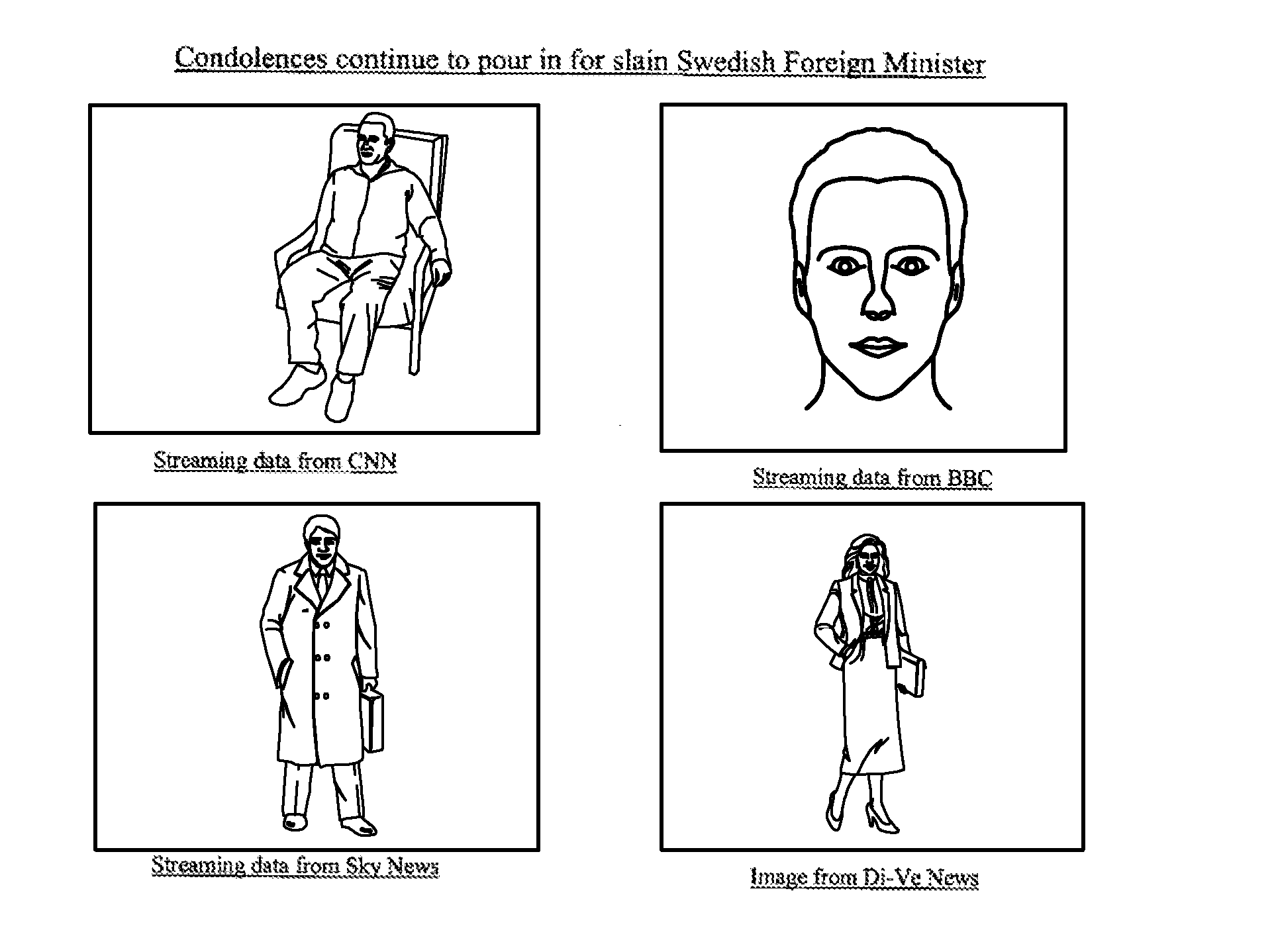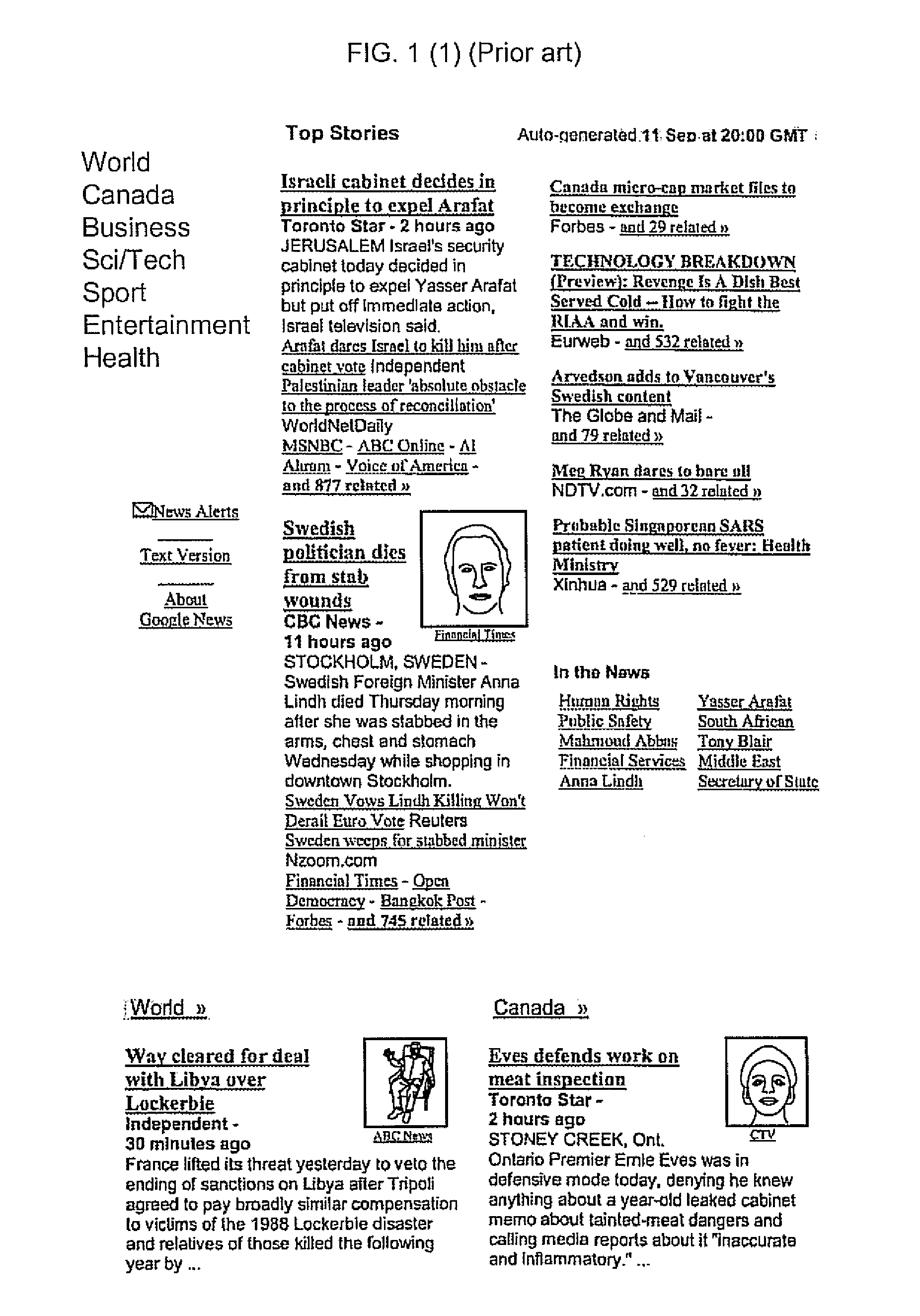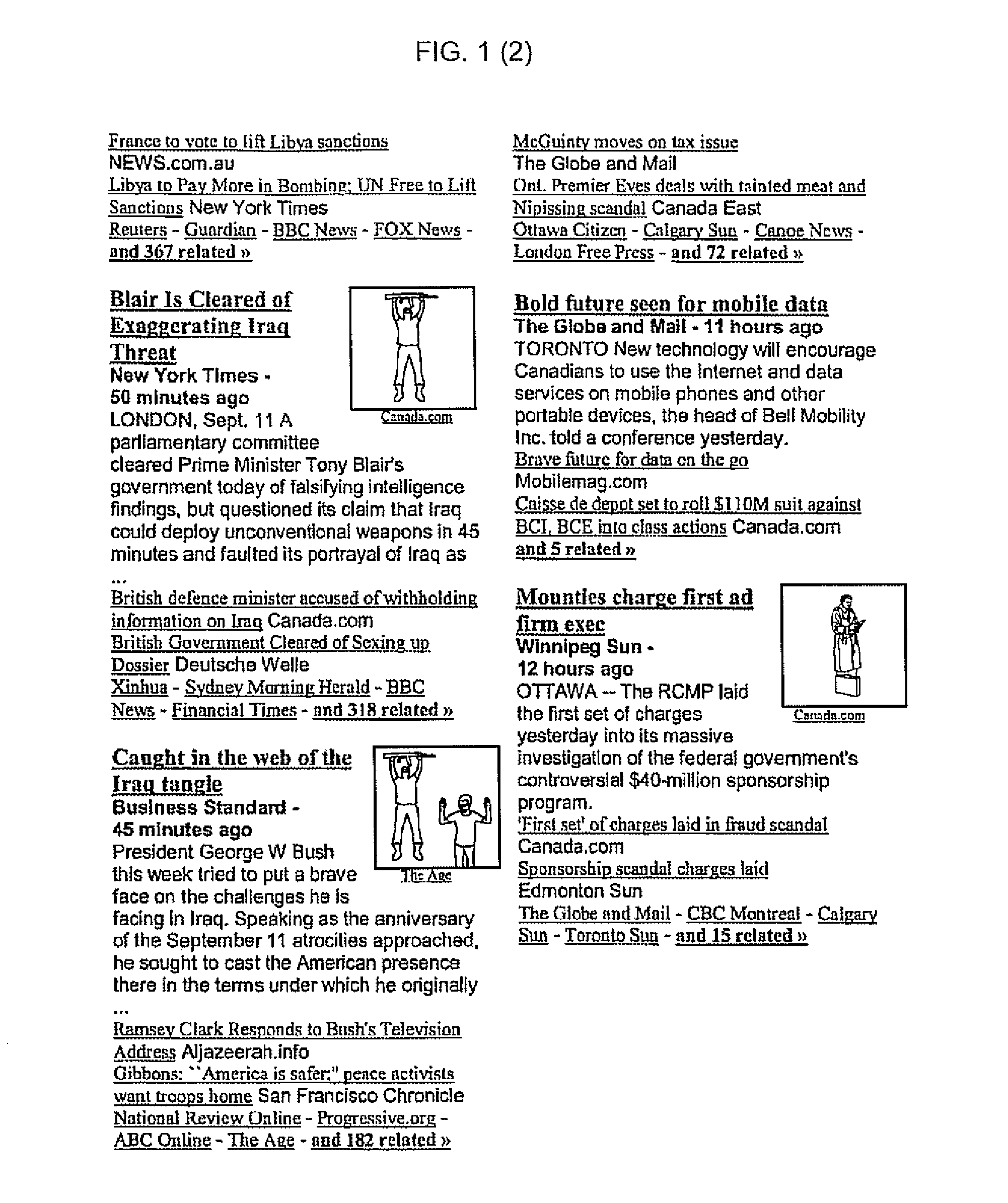System and method for improved searching on the internet or similar networks and especially improved MetaNews and/or improved automatically generated newspapers
a technology of meta news and automatic generation, applied in the field of improved search on the internet or similar networks, can solve the problems of less reliable, hardly useful, and more important pages about sting that don't include the word musician might be lost, so as to achieve the effect of higher page rank
- Summary
- Abstract
- Description
- Claims
- Application Information
AI Technical Summary
Benefits of technology
Problems solved by technology
Method used
Image
Examples
Embodiment Construction
[0090]All of descriptions in this and other sections are intended to be illustrative examples and not limiting.
[0091]Referring to FIG. 1, I show an example of the look of a typical Google automatic “newspaper” front page (prior art). As can be seen, the prior art system chooses for each headline just one of the possible sources as the main item (Including the first sentence in that news item) and usually also a photo from one of the possible sources (typically from another source), and typically indicates below in smaller print a few additional related headline links below, and then a few additional names of news sources below, which also link to related items, and then there is a final link to typically a few hundreds of additional related links.
[0092]Referring to FIG. 2, I show an example of the look of a typical list generated in news.google.com after clicking on the list of related items (prior art). In this case the item that was clicked on was the item about the talks about de...
PUM
 Login to View More
Login to View More Abstract
Description
Claims
Application Information
 Login to View More
Login to View More - R&D
- Intellectual Property
- Life Sciences
- Materials
- Tech Scout
- Unparalleled Data Quality
- Higher Quality Content
- 60% Fewer Hallucinations
Browse by: Latest US Patents, China's latest patents, Technical Efficacy Thesaurus, Application Domain, Technology Topic, Popular Technical Reports.
© 2025 PatSnap. All rights reserved.Legal|Privacy policy|Modern Slavery Act Transparency Statement|Sitemap|About US| Contact US: help@patsnap.com



